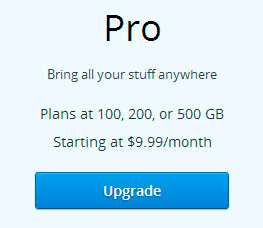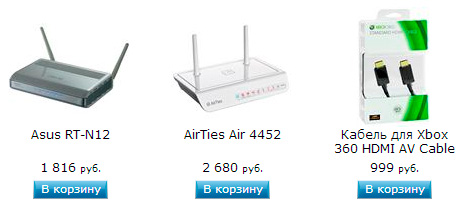Monetization Methods for Internet Projects
Let's talk about an important aspect of the existence of any site, about the existing methods of monetization and their application in real projects. The future of the project and its prospects in the market depend on this, a very small thing.
The model, with a monthly payment is quite common, is considered the Asian model of monetization, as it was often used in Korean online games. The basic principle is that to continue using the product, you must pay for it, while in the model with a regular subscription, all users pay monthly for using the service.

Users get basic functionality for free, and pay for additional options.
Usually there is, along with the ability to use the service for free, while buyers of the subscription get some advantages over ordinary users, such as:

Purchase of services or goods, if necessary, these goods. The most standard way is used at the moment when the user needs this service, for example, the opportunity to create a new project, buy minutes of conversation, order a T-shirt or sneakers in the online store.
The user can buy both one unit of goods and a package of services that includes a set of elements, for example a mug in a gift box with delivery.

In addition to selling real goods and services, you can sell virtual ones (hearts, dogs, badges), their main difference is that they do not give real advantages, but give only status or are a decoration for a user account. Also, such products can be distributed as a promotion to the most active users.

This method is used by intermediary services, and consists in obtaining a percentage from each sale of the main service. In general, it can be divided into 2 large categories:

The most popular method, which is mentioned in almost all business plans, presentations, meetings, P&L models, becomes the very magic wand that seems to save everyone.
The total revenue from an advertising article in all plans is usually equal to the amount that will cover all costs, provide income, and the brand new beautiful Mercedes to the creators, when asked why advertising revenue is now zero, we’ll get the answer straight and we’ll sell it all out.
So, let's try to calculate how much a project can earn on display and contextual advertising.
For example, to earn $ 10,000 per month, you need:
It is necessary to take into account the fact that display advertising itself is not for sale, and for its sale it is necessary to hire a sales specialist or conclude an agreement with an agency that is interested in exclusively large sites.

In fact, this is indirect advertising. The service receives money for referred customers, and the percentage of purchases of these customers. Income sharing is usually based on creating an affiliate interface in which you can see how many customers are attracted and what income they brought.

Many survey services and audience measurements are prepared to pay for user actions, such as filling out questionnaires, registering on sites and completing interactive surveys.

Placement product concepts are often confused with conventional display advertising, however, this is a slightly different niche, it has a different set of means for advertising, and therefore, even when the entire inventory of advertising placement has already been sold, you can always find a place for product placement.
You also need to understand the difference, when you advertise in the form of banners, users understand that this is just advertising, but if you brand elements of your website or the Adidas or Coca cola application, then the user will consider that the service is more strongly associated with the specified brand.

“Raise your resume”, “Be the first in the top”, and others, they all exploit the same principle, a person’s desire to stand out and become different from others. In our market, this type of monetization first appeared on services such as Mamba and Loveplanet.
Everyone understands that with the number of registrations of 100 or more per day, newly created accounts very quickly fall into the abyss, and new users, resumes, projects and more constantly appear on top. Of course, you can try to rank these entities by other parameters other than the time of adding, however, it was the ability to stay on top or return to the top that allowed the above services to develop and grow.

In fact, this method is not a separate method of monetization, since it is only an intermediate link between real money and the purchase of goods and services on the site. However, for many projects, it is a necessary step, since, in fact, you can start managing money right after you bought virtual currency for them, even if the services themselves will be provided much later.

It is very important at the first stages before starting the service to think over what you are going to make money on, you should not expect that you will first take over the world, and then happiness will come, usually everything ends more prosaic, the world is not yet captured, and the creators have already completed the money.
You can and should use mixed monetization models such as subscription + one-time services + advertising, and so on. As the project grows, you need to change the business model, try different methods, look for those that will work better for you.
Used on Wikipedia for the annual fundraising for the development of the project, it has also been and remains popular with many blogs and communities in which direct monetization is not possible.
Payment systems such as Yandex.Money, WebMoney and Robokassa offer special buttons for automatically raising funds in favor of the project, but their practical application in most cases gives very deplorable results.
There are two main modifications to crowdfunding:
Experiments with this model were tested in 2008 on the Radiohead album "In Rainbows", when the listeners could pay any price for the album that they considered necessary, except for sales, this move was a very successful PR tool, and more than 3 were sold by the end of the year million copies of the album. Now this model is used not only online, but also used when paying in catering, hotels and cinemas. One of the most famous online projects is the Humble Bundle.
When using SaaS services, it became possible to pay directly for consumed / reserved services, such as processor time, hard disk space, or service usage time. It is widely used by cloud hosting (Amazon S3, Azure), as well as indirectly by various services (Megaplan, Mail Chimp)
Subscription // Monthly Payments
The model, with a monthly payment is quite common, is considered the Asian model of monetization, as it was often used in Korean online games. The basic principle is that to continue using the product, you must pay for it, while in the model with a regular subscription, all users pay monthly for using the service.
Examples of using:
- Task management systems, SaaS services
It is worth noting that most of the services currently use not just a subscription, but an extended subscription model, with a free trial period, and other modifications

Advantages
- It works well if you have a quality service that you want to pay for
- Small amount of payments (up to 300 rubles)
- Ability to unsubscribe from renewal
Problems
- Inability to use the service without payment
- In the absence of a trial period, not everyone is ready to immediately pay for the service
Extended Subscription // Selling PRO Accounts // Freemium
Users get basic functionality for free, and pay for additional options.
Usually there is, along with the ability to use the service for free, while buyers of the subscription get some advantages over ordinary users, such as:
- Large amount of storage space / portfolio
- Unlimited Use
- Ability to grow your account faster
- The ability to read articles, or respond to topics that are open only to Pro
- Separate technical support
Examples of using:
- Gmail, Dropbox, Free-lance, Skype

Advantages:
- Free use gives an opportunity to get acquainted with the product to a large number of users
Problems:
- Low level of paying users, usually 0.5-1%
- Many users can stay on the free version.
One-time purchase of services // Delivery of physical goods
Purchase of services or goods, if necessary, these goods. The most standard way is used at the moment when the user needs this service, for example, the opportunity to create a new project, buy minutes of conversation, order a T-shirt or sneakers in the online store.
The user can buy both one unit of goods and a package of services that includes a set of elements, for example a mug in a gift box with delivery.
Examples of using
- Cellular operators, email distribution services
- Internet shops

Advantages
- The user buys exactly what he needs at this moment
- We can increase the number of different items in the store, and thereby give the opportunity to buy individual services or goods
disadvantages
- There is a temptation to improve only what is for sale, while spending less time developing everything else
Selling virtual goods
In addition to selling real goods and services, you can sell virtual ones (hearts, dogs, badges), their main difference is that they do not give real advantages, but give only status or are a decoration for a user account. Also, such products can be distributed as a promotion to the most active users.
Examples of using
- Social networks, games

Advantages
- Money is spent only on creating the first copy, all the rest are free for the company
disadvantages
- Not applicable in business products.
Getting sales commission
This method is used by intermediary services, and consists in obtaining a percentage from each sale of the main service. In general, it can be divided into 2 large categories:
- Payment systems and payment agents who receive their percentage from each sale
- Lead generators that get their percentage from attracted users
Examples of using
- PayOnline, DengiOnline, RoboKassa, WebMoney
- Sravni.ru, SkyScanner

Advantages
- No need to build customer service and service infrastructure
- Already have a formed market with high turnover
disadvantages
- There are more and more intermediaries, and to work in this niche, you need to be a very high-quality service, with good sales specialists, and a low commission
Display & Contextual Advertising
The most popular method, which is mentioned in almost all business plans, presentations, meetings, P&L models, becomes the very magic wand that seems to save everyone.
The total revenue from an advertising article in all plans is usually equal to the amount that will cover all costs, provide income, and the brand new beautiful Mercedes to the creators, when asked why advertising revenue is now zero, we’ll get the answer straight and we’ll sell it all out.
So, let's try to calculate how much a project can earn on display and contextual advertising.
For example, to earn $ 10,000 per month, you need:
- Display, 300,000 impressions per day, and good sales staff
- Adsense / Yandex.Direct, 700,000 per day
It is necessary to take into account the fact that display advertising itself is not for sale, and for its sale it is necessary to hire a sales specialist or conclude an agreement with an agency that is interested in exclusively large sites.
Examples of using
- Lenta.ru, Habr.ru, Rbc.ru

Advantages
- The main priority is placed on high-quality content and editorial policies, and not on things that are sold for money and user restrictions
disadvantages
- Sales difficulty
- Not all segments sell ads easily.
- Large areas of the site should be given for advertising
Partnership programs
In fact, this is indirect advertising. The service receives money for referred customers, and the percentage of purchases of these customers. Income sharing is usually based on creating an affiliate interface in which you can see how many customers are attracted and what income they brought.
Examples of using
- Amazon, Ozon
- Mamba, Loveplanet

Advantages
- Unlike advertising, with the affiliate model, you can earn income after user registration, many systems continue to pay remuneration up to 3 years from the date of user registration
disadvantages
- Also, as in advertising for large incomes, you need a large audience
- You give all your paying and active users to other services
Offers / Payment for the collection of information
Many survey services and audience measurements are prepared to pay for user actions, such as filling out questionnaires, registering on sites and completing interactive surveys.
Examples of using
- Nielsen, TNS, PlanB media, AdLabs

Advantages
- Users stay on the service
disadvantages
- Distracting users, littering focus
Product placement
Placement product concepts are often confused with conventional display advertising, however, this is a slightly different niche, it has a different set of means for advertising, and therefore, even when the entire inventory of advertising placement has already been sold, you can always find a place for product placement.
You also need to understand the difference, when you advertise in the form of banners, users understand that this is just advertising, but if you brand elements of your website or the Adidas or Coca cola application, then the user will consider that the service is more strongly associated with the specified brand.
Examples of using
- Habr.ru, Kinopoisk.ru

Advantages
- Great branding price compared to regular ads
disadvantages
- Service users find it difficult to find standard controls
Service Promotion Fee
“Raise your resume”, “Be the first in the top”, and others, they all exploit the same principle, a person’s desire to stand out and become different from others. In our market, this type of monetization first appeared on services such as Mamba and Loveplanet.
Everyone understands that with the number of registrations of 100 or more per day, newly created accounts very quickly fall into the abyss, and new users, resumes, projects and more constantly appear on top. Of course, you can try to rank these entities by other parameters other than the time of adding, however, it was the ability to stay on top or return to the top that allowed the above services to develop and grow.
Examples of using
- Mamba.ru, LovePlanet.ru

Advantages
- The ability for older users to declare themselves, or promote their projects
disadvantages
- Changing the standard sort, which makes search difficult
- Many services too sharpen different ratings for this functionality, which worsens usability.
Selling virtual currency
In fact, this method is not a separate method of monetization, since it is only an intermediate link between real money and the purchase of goods and services on the site. However, for many projects, it is a necessary step, since, in fact, you can start managing money right after you bought virtual currency for them, even if the services themselves will be provided much later.
Examples of using
- LinguaLeo, Online games

Advantages
- Receiving advances from users for future services
- Unused cash balances remain with the company
- Ability to set a flexible pricing policy
- Quick purchase of services on the site, bypassing the stage of money transfer
disadvantages
- The user may accumulate the remainder of the virtual currency, which cannot be spent anywhere and this is annoying
Conclusions and the use of mixed monetization models
It is very important at the first stages before starting the service to think over what you are going to make money on, you should not expect that you will first take over the world, and then happiness will come, usually everything ends more prosaic, the world is not yet captured, and the creators have already completed the money.
You can and should use mixed monetization models such as subscription + one-time services + advertising, and so on. As the project grows, you need to change the business model, try different methods, look for those that will work better for you.
UPD1: Crowdfunding Model
Used on Wikipedia for the annual fundraising for the development of the project, it has also been and remains popular with many blogs and communities in which direct monetization is not possible.
Payment systems such as Yandex.Money, WebMoney and Robokassa offer special buttons for automatically raising funds in favor of the project, but their practical application in most cases gives very deplorable results.
There are two main modifications to crowdfunding:
- Fundraising before the launch of the project, at sites such as Kickstarter
- A request to the community for help on an already working site
Advantages
- Quick registration and installation on the site
- It does not interfere with users as an advertisement, and does not interfere with the growth rate of the project’s audience, since it is a subscription
disadvantages
- Most sites don’t have that many fans to fully cover operating expenses with crowdfunding
- There is some similarity to begging, which does not cause positive emotions in the audience.
UPD2: Model Pay As You Want
Experiments with this model were tested in 2008 on the Radiohead album "In Rainbows", when the listeners could pay any price for the album that they considered necessary, except for sales, this move was a very successful PR tool, and more than 3 were sold by the end of the year million copies of the album. Now this model is used not only online, but also used when paying in catering, hotels and cinemas. One of the most famous online projects is the Humble Bundle.
UPD3: Model Payment for used / reserved resources
When using SaaS services, it became possible to pay directly for consumed / reserved services, such as processor time, hard disk space, or service usage time. It is widely used by cloud hosting (Amazon S3, Azure), as well as indirectly by various services (Megaplan, Mail Chimp)
